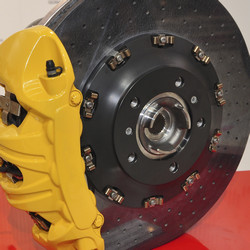Reliable ceramics for high-performance systems
Studies on advanced ceramics have highlighted their exceptional mechanical, thermal and tribological properties, especially for applications such as modern rolling and sliding bearings or metalworking and cutting tools. The ROLICER(opens in new window) (Enhanced reliability and lifetime of ceramic components through multiscale modelling of degradation and damage) team worked to bridge the knowledge gap that currently exists regarding microstructural properties of ceramics and their damage and degradation. Given that ceramic microstructure controls its macroscopic behaviour, microstructure degradation will affect reliability of any component in service. Researchers combined a chain of simulation tools and targeted model experiments to model the damage mechanisms that affect lifetime and reliability of silicon nitride. Calculations and simulations of fractures on the atomic scale can show the orientation and planes at which fractures are mostly likely to occur on larger scales. Also, using macro-scale simulations, it is possible to identify stress gradients that influence the stress state at the crack and thus direct towards certain design or loading recommendations. Using finite element analysis, researchers successfully studied silicon nitride fracture behaviour under different loads. Cohesive zone models helped simulate and predict initiation and propagation of small cracks in the range between 10 and 100 μm. For longer cracks, the team used the extended finite element method. On the atomistic scale, the focus was on accurately modelling the properties of grains, grain interfaces, bulk structures and intergranular interface films (IGFs) that appear at grain boundaries. These simulations enabled researchers to study the cohesive strength of silicon nitride grains with or without defects and impurities. Furthermore, IGF simulations facilitated studies on adhesion between grains. Based on findings from numerical simulations, work focused on both material design and implementation in the industry. The team successfully produced and tested two silicon nitride grades tailored for hot rolling. The ceramic rolls processed 150 000 kg of different steel qualities, including an unprecedented quantity of nickel-based superalloy wires. The work conducted by the ROLICER team is on track to be translated for application in industry. Project findings should help to significantly broaden the range of high-performance systems using ceramic components, including ceramic gears and sliding and friction systems.







